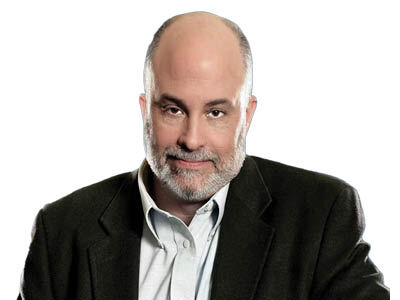The Latest: Israel and Hamas agree to a ceasefire, release of hostages and prisoners
News > Religion News

Audio By Carbonatix
7:13 PM on Wednesday, October 8
By The Associated Press
Israel and Hamas have agreed to a pause in their devastating two-year war and the release of the remaining hostages in exchange for Palestinian prisoners.
Israeli Prime Minister Benjamin Netanyahu's office said early Friday his Cabinet approved the “outline” of a deal to release hostages held by Hamas. The brief statement focused on the hostage release and made no mention of the other parts of President Donald Trump’s plan for ending the war.
Under the plan, Hamas will release all 20 living hostages in the coming days in exchange for Palestinian prisoners, while the Israeli military will begin a withdrawal from the majority of Gaza.
Uncertainty remains about some of the thornier aspects of Trump's plan, such as whether and how Hamas will disarm, and who will govern Gaza. Trump said Thursday that he expects the hostages will be released from Gaza on Monday or Tuesday.
U.S. officials said Thursday the United States would send about 200 troops to Israel to monitor the deal.
Here's the latest:
The official, speaking on condition of anonymity in line with regulations, said that, according to the agreement, the ceasefire should begin immediately.
The official said the Israeli military now has 24 hours to pull back its forces to an agreed-upon line.
The move announced by Netanyahu's office early Friday marks a key step in implementing a ceasefire in the Gaza Strip that was brokered by Trump.
The brief statement focused on the hostage release and made no mention of the other parts of Trump’s plan for ending the war. Israel is expected to release nearly 2,000 Palestinian prisoners in exchange for the remaining 48 hostages taken in Hamas’ Oct. 7, 2023, attack.
Around 20 of the hostages are believed to be alive.
A litany of questions remain on next steps, including Hamas' disarmament, a withdrawal of Israeli forces from Gaza and a future government in the territory.
A U.S. official said the new troop team would help monitor implementation of the ceasefire agreement and the transition to a civilian government in Gaza.
A coordination center will be staffed by about 200 U.S. service members who have expertise in transportation, planning, security, logistics and engineering, said the official, who noted that no American troops will be sent into Gaza.
A second official said troops would come from U.S. Central Command as well as other parts of the globe. That official added that troops already have begun arriving and will continue to travel to the region over the weekend to begin planning and efforts to establish the center.
—By Konstantin Toropin
The United States is sending the troops to Israel to help support and monitor the ceasefire deal in Gaza as part of a team that includes partner nations, nongovernmental organizations and private sector players, U.S. officials say.
The officials, who spoke on condition of anonymity to discuss details not authorized for release, say U.S. Central Command is going to establish a “civil-military coordination center” in Israel that will help facilitate the flow of humanitarian aid as well as logistical and security assistance in the territory wracked by two years of war.
Trump’s special envoy Steve Witkoff and son-in-law Jared Kushner gave a presentation Thursday to Israeli Prime Minister Benjamin Netanyahu’s Cabinet on the merits of the deal, according to a senior U.S. official who was not authorized to speak publicly and spoke to reporters on condition of anonymity.
The 20-point plan that Trump released for Gaza was written by Witkoff and Kushner, according to the official.
—By Michelle Price
Hamas sharply condemned Israel for an airstrike late Thursday in Gaza City that medics say killed at least two people and wounded dozens. The group accused Netanyahu of trying to hamper mediators’ efforts to end the war and called on the U.S., Egypt and Qatar to push Israel to halt the strikes.
The Israeli military said it struck a Hamas “terrorist cell” in northern Gaza that posed an immediate threat to nearby soldiers.
The Palestinian militant group said the airstrike showed that Netanyahu is continuing “the genocide until the last moments.” Israel denies it’s committing genocide in Gaza.
The speaker of Israel’s Knesset has formally invited Trump to address the country’s elected assembly as a sign of gratitude for the Gaza ceasefire deal.
Amir Ohana said it would be the first such address by an American president since then-President George W. Bush visited Israel in 2008.
“The people of Israel regard you as the greatest friend and ally of the Jewish nation in modern history,” he wrote in the invitation.
Trump said earlier Thursday, “If they would like me to, I will do it,” when he travels to the Middle East in the coming days.
Ohana also cited decisions taken during Trump’s first term to move the U.S. Embassy to Jerusalem, recognize Israel’s annexation of the Golan Heights seized from Syria in the 1967 Mideast war, and his brokering of the Abraham Accords in which four Arab countries forged ties with Israel.
The president was asked about an element of his peace proposal that says there may eventually be a path for Palestinian statehood if “conditions” are in place, and Trump said, “We’re going to see how it all goes.”
“There’s a point at which we may do something that would be a little bit different and may be very positive for everybody. But we’ll be looking at that at the time,” Trump said.
The president added that he was hopeful things would progress that far, adding: “I think we’ll get to that period, too.”
The president didn’t have any specifics of what kind of international security force might be used to implement the ceasefire deal. Trump’s plan released last month called for a “Temporary International Stabilization Force” that the U.S. would develop with Arab and international partners.
Trump said, “There’s going to be a large group of people determining what it will be” but said that “very rich countries are going to be funding it.”
Itamar Ben Gvir, Israel’s public security minister and a key Netanyahu ally, said Thursday night that he and members of his far-right Jewish Power party will vote against the ceasefire plan.
Ben Gvir said he “refused to be part of a government that allows the continuation of Hamas rule in Gaza” and accused the Israeli public of overlooking the dangers of releasing hundreds of convicted militants.
His opposition is unlikely to threaten the plan’s approval, which is expected to pass by a wide margin.
Ben Gvir resigned from Netanyahu’s government at the start of a previous ceasefire in January, before rejoining the coalition hours after Israel restarted military operations in March.
A senior Hamas official and lead negotiator made a speech laying out what he says are the core elements of the ceasefire deal: completely ending the war in Gaza, releasing more than 2,000 Palestinian prisoners, opening the border crossing with Egypt, allowing aid to flow, and an Israeli withdrawal from Gaza.
Khalil al-Hayya said the Trump administration and mediators gave assurances that the two-year war is over.
“We declare today that we have reached an agreement to end the war and the aggression against our people,” Al-Hayya said in a televised speech Thursday evening.
He said Israel will release 250 prisoners serving long sentences and about 1,700 people detained in Gaza since the war began. All women and children held in Israeli jails will be freed, he added. He didn’t offer details on the extent of the Israeli withdrawal from Gaza.
He said Hamas and other Palestinian factions will now focus on achieving self-determination and establishing a Palestinian state.
The days ahead could be politically tricky for Netanyahu.
Israel’s leader has been shadowed by an ongoing corruption trial as he navigated the Gaza war. His grip on power has been largely contingent on the support of hard-line, far-right coalition partners who had been urging him to continue to prosecute operations on Hamas until the group was eliminated.
But Trump suggested Netanyahu’s political standing has been bolstered by the ceasefire and hostage deal.
“I think he’s very popular right now. He’s much more popular today than he was five days ago,” Trump said. “I can tell you right now people shouldn’t run against him. Five days ago, might not have been a bad idea.”
Russian President Vladimir Putin said “we very much hope that these initiatives of the U.S. President will be implemented,” speaking at the Russia-Central Asia summit in Tajikistan’s capital on Thursday.
He reaffirmed Russia’s view that “the most important, indispensable condition for the long-term stabilization and resolution of all issues related to this difficult problem is the creation of an independent Palestinian state.”
Iran’s Foreign Ministry said it supports any effort that halts the war in Gaza, ensures Israeli troops withdraw, delivers humanitarian aid and restores Palestinians’ rights.
The ministry warned that the international community must stay alert for possible Israeli violations and urged global courts to pursue accountability for alleged Israeli war crimes in Gaza. Experts and major rights groups have accused Israel of genocide. Israel vehemently denies the allegations.
The statement on Telegram said Tehran has used “all its diplomatic capacities” over the past two years to pressure Israel and its allies to stop the fighting.
Trump last month gathered with the leaders of eight Arab or predominantly Muslim countries on the sidelines of the U.N. General Assembly to discuss strategy on ending the Israel-Hamas conflict and a plan for postwar Gaza.
Days after that meeting, Trump met at the White House with Israeli Prime Minister Benjamin Netanyahu to discuss the plan and the two leaders agreed to Trump’s 20-point proposal to end the war.
Rubio noted that Trump’s negotiators then stepped up their efforts through intermediaries in Qatar and Egypt to get Hamas on board. Trump, meanwhile, held “extraordinary” phone calls and meetings with world leaders “that required a high degree of intensity and commitment” to get the deal to the finish line.
“I think what’s important to understand is that yesterday what happened was really a human story,” Rubio said. He added, “Perhaps the entire story will be told about the events of yesterday. But, suffice it to say, it’s not an exaggeration, none of it would have been possible without the president of the United States being involved.”
When the ceasefire deal takes effect, Saeed Abu Elaish, a Palestinian medic, plans to go back to the remains of his house in northern Gaza’s Jabaliya refugee camp.
Two dozen members of his family, including his wife and their two daughters, were killed in an Israeli airstrike in October 2023.
“I just want to touch the place that was our home and tell those I lost that I am still here,” he said somberly. He views the pause in fighting as a “significant step” even it comes too late.
“This ceasefire, although necessary, doesn’t mean the end,” he told The Associated Press. “I am concerned that this calm could be temporary, and that the bombing will return.”
Abu Elaish was forced to flee Gaza City late last month and has been sheltering in central Gaza.
Addressing reporters and jubilant crowds at Hostages Square in Tel Aviv, several former hostages said they were “indescribably happy” at the prospect of the imminent release from Gaza of all remaining hostages — reminded of the moment they themselves were told they would be going home.
“I can’t stop thinking about what the hostages still there are going through,” said ex-hostage Amit Soussana, “Do they believe that this time they’re really coming home?”
Omer Shem Tov, who was released from Hamas captivity in the last ceasefire, said he “jumped up and down with joy” at the news of the deal, but added that “it isn’t over yet” and called on the Israeli public to “keep fighting for their release.”
Fletcher said that in the last several months, humanitarian partners have only been able to deliver 20% of the aid needed to address the dire situation throughout the Gaza Strip. Officials have been in constant direct contact with Israeli officials in the last 12 hours to get the go-ahead to bring aid already in the pipeline in the West Bank, Jordan, Egypt and Cyprus.
But Fletcher warned that the 170,000 tons of aid is just the tip of the iceberg for what is needed in Gaza, calling on developed countries to scale up contributions to the effort.
“So every government, every state, every individual who has been watching this crisis unfold and wondering, ‘What can we do? If only there is something we can do,’ now is the time to make that generosity count,” he said. “And I plead with the level of kindness and generosity that, frankly, the world owes right now.”
Tom Fletcher, the U.N. humanitarian chief, told reporters Thursday that officials have 170,000 metric tons of medicine, aid and other supplies ready to go when they are given a green light.
“We are ready to roll,” Fletcher said, warning that there should be no “backsliding” from either side of the agreement. He outlined plans for the first 60 days of the ceasefire, which would include an increase in the pipeline of supplies to hundreds of trucks everyday.
“We will scale up the provision of food across Gaza to reach 2.1 million people who need food aid, and around 500,000 people who need nutrition,” he said.
French President Emmanuel Macron has cautioned that Israeli settlement in the West Bank could undermine the pause in the Hamas-Israel war.
He said the accelerating construction of Israeli settlements “represents an existential threat to the state of Palestine. Not only is it unacceptable and contrary to international law, it feeds tensions, violence, instability and in effect contradicts the American plan and our collective ambition for a region at peace.”
He also suggested that West Bank settlement cannot be justified by Hamas’ Oct. 7, 2023, attack on Israel, saying it “has nothing to do with Hamas and Oct. 7, 2023.” He spoke at the opening of a meeting of European and Middle East foreign ministers in Paris.
The European Union has expressed readiness to support police and humanitarian aid programs in Gaza if the ceasefire holds, the top diplomat for the 27-nation bloc said Thursday.
“We need to plan for the day after,” Kaja Kallas said before a meeting in Paris of top diplomats from Europe and Middle East.
Kallas said an EU humanitarian aid team stands ready at the Rafah border crossing in Egypt, and that its assistance mission to the Palestinian Authority’s police could support a “stabilization force” in Gaza.
The president opened a meeting with his Cabinet at the White House on Thursday by speaking about the ceasefire deal and his plans to travel to the Middle East.
Trump said he will be going to Egypt for a signing ceremony. It was not clear if he would be traveling elsewhere on the trip.
He said it is a complicated process for the hostages to be released from Gaza, but it will be happening Monday or Tuesday. He said there will also be the remains of about 28 hostages to be brought back, but he didn’t offer details or timing on that.
Israeli tanks deployed on the main coastal road in Gaza have fired several rounds to push back a crowd of displaced Palestinians gathering there in hopes of returning to their homes in the north of the territory.
The ceasefire deal between Israel and Hamas has not yet been ratified by the Israeli government and is yet to take effect. But hundreds of Palestinians have gathered on the coastal road at the intersection between north and south Gaza, in an apparent rush to return to their homes north.
Israeli military operations that began in late August in north Gaza has forced hundreds of thousands of Palestinians to flee south. The military had warned Palestinians against returning north, calling it a “dangerous combat zone.” It urged Gaza residents to wait until further notice.
In an Associated Press video, smoke was seen rising over the wide coastal al-Rashid road, as two tanks deployed to block access to the north. People fled to avoid what appeared to be gunfire over their heads.










